kerala
Tiki's Breeder
I have already explored Senegal with little success and returned empty handed.
Not easy getting passed the fear barrier of the local cultivators.
Got to admit that their prisons are a lot harsher than ours.
On my first trip, Dokta’Zee, a friend, had prepared me quite well.
He taught me quite a few words in Wolof, which had helped a great deal.
Since I wasn’t satisfied with the first trip, I planned a second one.
This time I asked Dokta’Zee to accompany me.
The idea of revisiting Senegal excited him and he accepted. Immediately, he reacquainted himself with his old friends in Senegal.
We will be heading to Casamance; very unlikely to find anything-decent elsewhere.
The season is in October and we are currently in June.
We set up the trip and the rendezvous is for October.
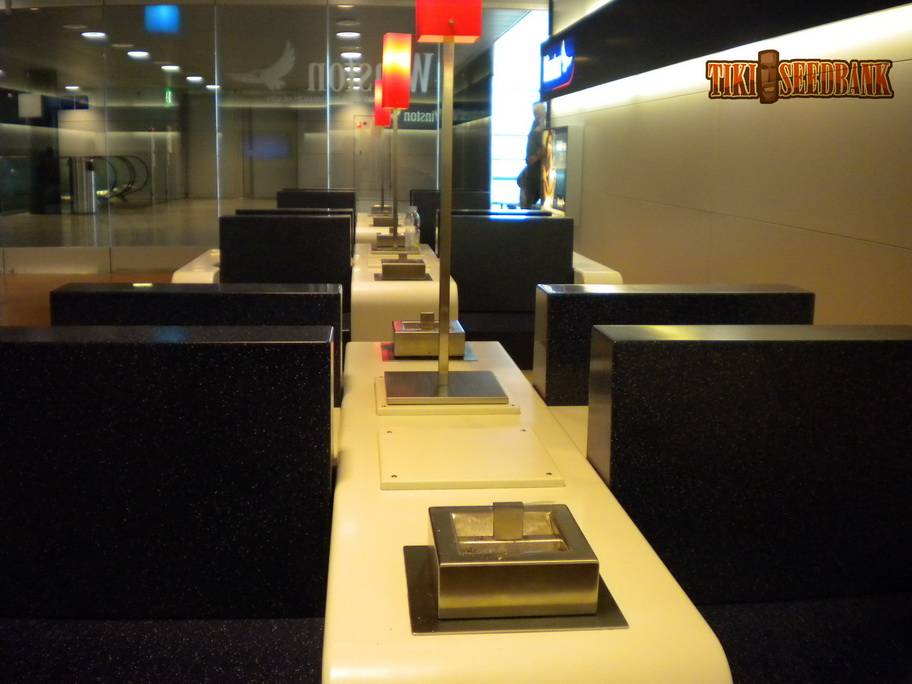
Dokta’Zee and I depart at 11am from Zurich.
Arrive in Dakar at 11pm. Temperature…. cooking!
What stands out this time is the humidity.
I didn’t feel this last time.
But it is the end of the rainy season, therefore normal.
The air is thick and oppressive.
We pass the border and trek past the airport area to find a taxi that doesn’t try to pull the 5000CFA scam.
We still end up paying 2000CFAs. It’s hard trying to negotiate at the entrance of the highway since the cab drivers know that you don’t have much of a choice
We arrive at the hotel and find no electricity in the building. Actually there is a power outage in the entire country and it has been the case for a few days now.
We find out later that manifestations are being organised everywhere to protest against the power cuts.
The Minister for energy will be put to question for having mysterious deals, which led to purchasing cheap quality fuel.
I remember my first contact with a local here: “This is Africa, my friend!”
A week goes by and power cuts are continuously omnipresent in the entire country.
For a lot of little shops, these cuts mean an end to their business.
Freezers and fridges are often what enable shop owners to survive in an already dire market.
It is hot, hot and mucky, mosquitoes and humidity fully present for our first night in Senegal.
Mosquito nets are a necessity if we want to avoid scratching ourselves all night.
In Senegal the most annoying mosquitoes are the tiny ones.
Their proboscis being too small to pierce the skin, they tend to target areas where the skin is thin, hence the most sensitive parts of the body: the arch of the foot, between the fingers, the palm, the eyelashes, and behind the ears. All the areas that are going to itch like crazy.
Luckily their bites are itchy for only about 20 minutes.
There are tons of mosquitoes in the city.
It’s going to be tough in the bushes of Casamance
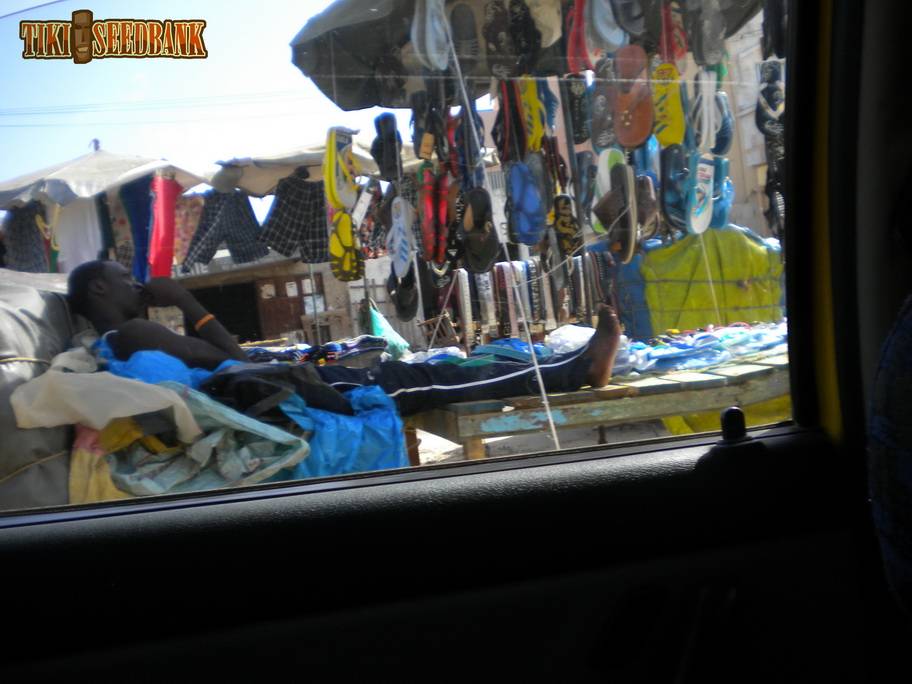
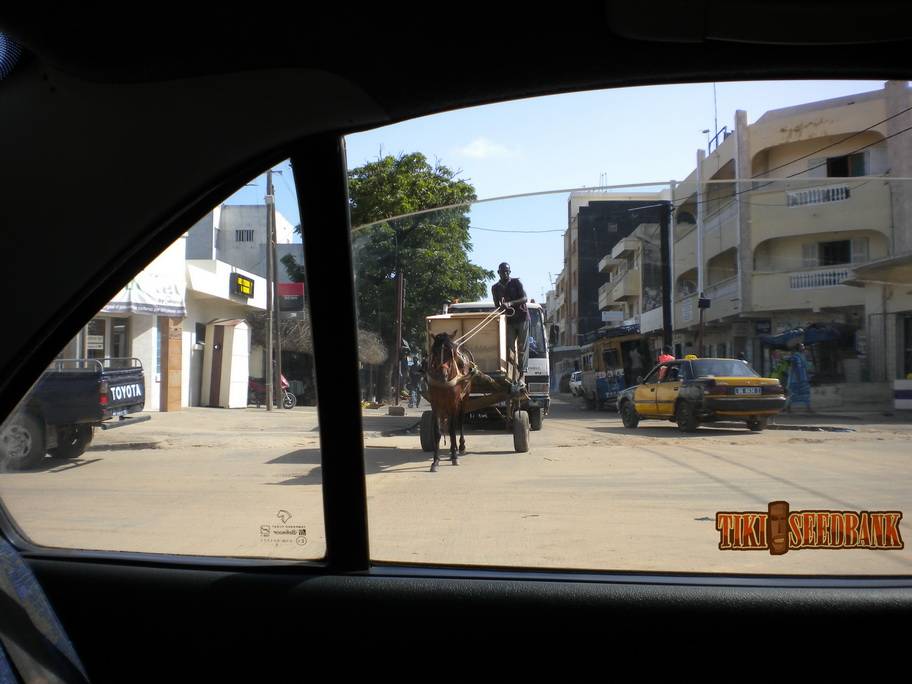
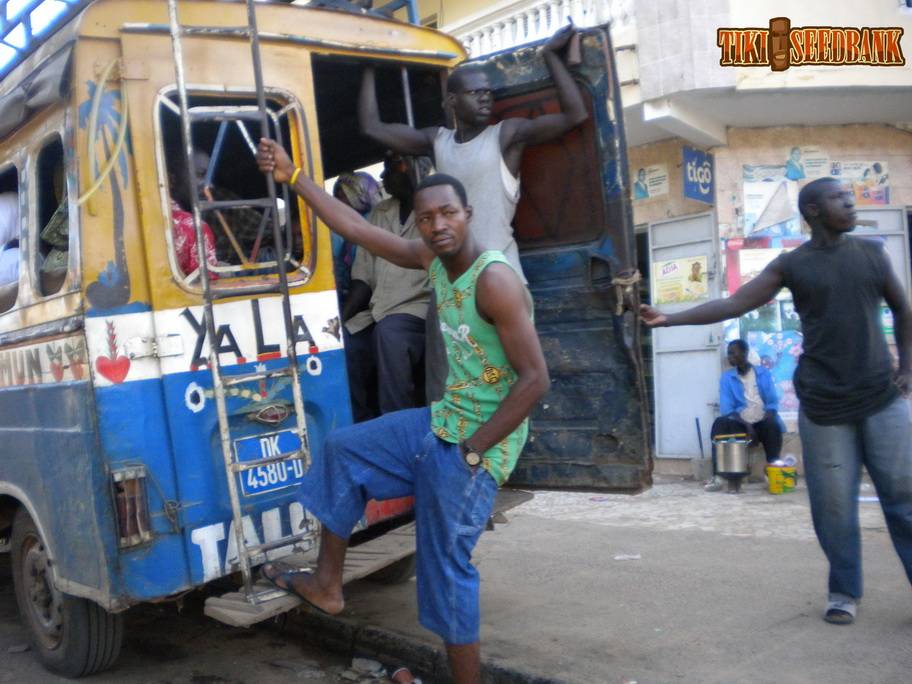
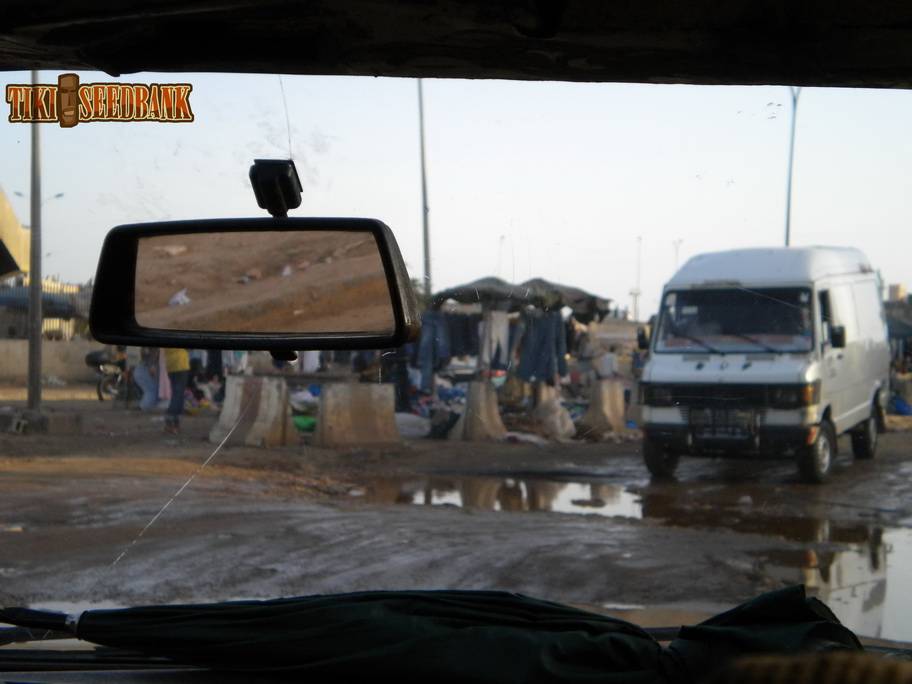
The next day we head south. We sort a few things out and inquire on transport costs.
We head to the station “Le Pompier” to grab a taxibrousse (bush taxi), which in most cases is a Peugeot 504 station wagon with 3 added seats at the back.
There are 8 of us with the driver...destination Kaolack.
We are in the rainy season so most likely the roads will be in a state.
It ends up taking us 4 hours to travel 150km (the distance from Dakar to Kaolack).
Considering the driver has to slalom between potholes large enough to destroy a car, we did a good time. The drivers here are aces on the wheel.
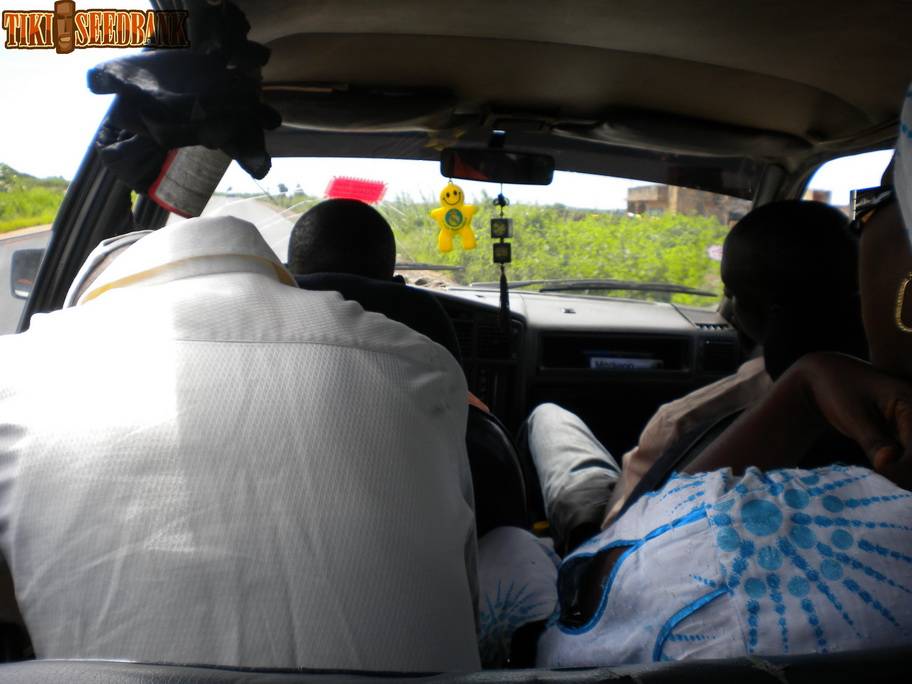
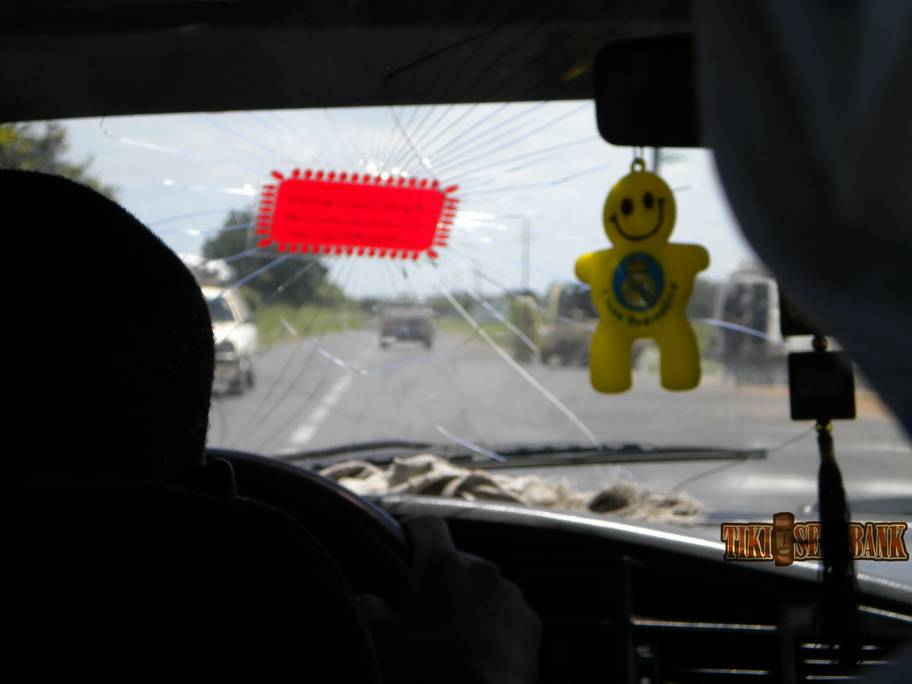
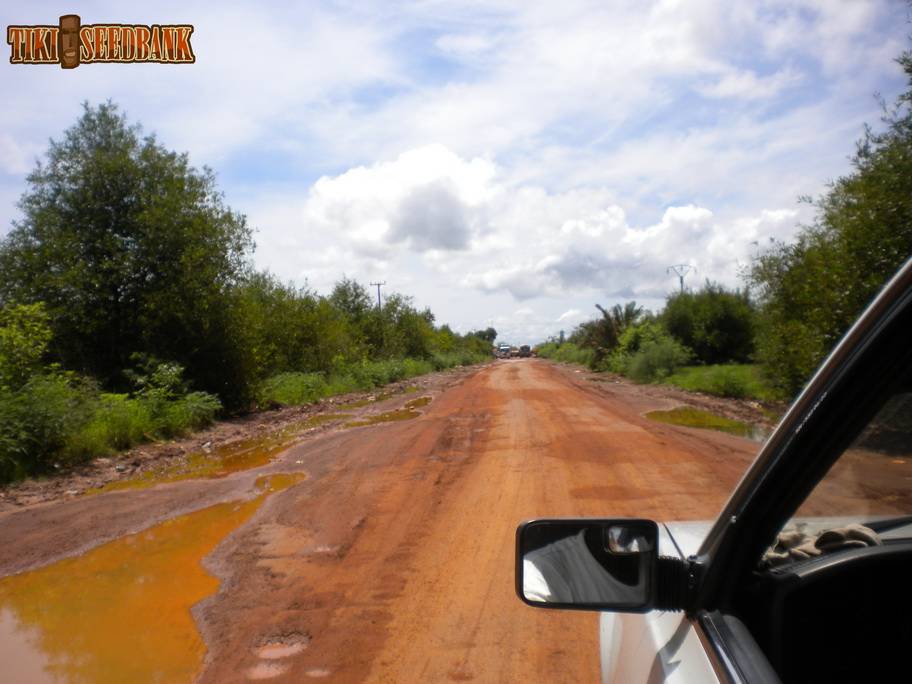
We stop at Kaolack and spend the night at a hotel. Next day it’s all the way to Casamance.
Again we use a taxibrousse but this time there are not 8, but 11 passengers.
A woman and her 4 kids now occupy the three back seats.
There is also another woman sitting beside us with her 3 year old.
None of the kids complain during the entire journey of 8hrs to Bignona.
8 hours for less than 300km.
300km of damaged roads sometimes flooded and sometimes even inexistent roads,
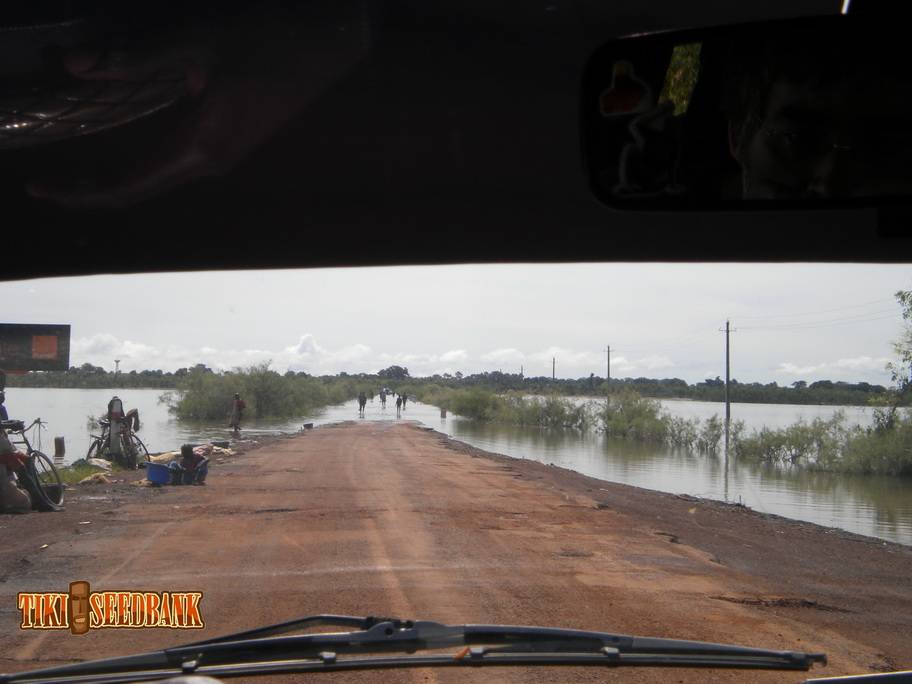
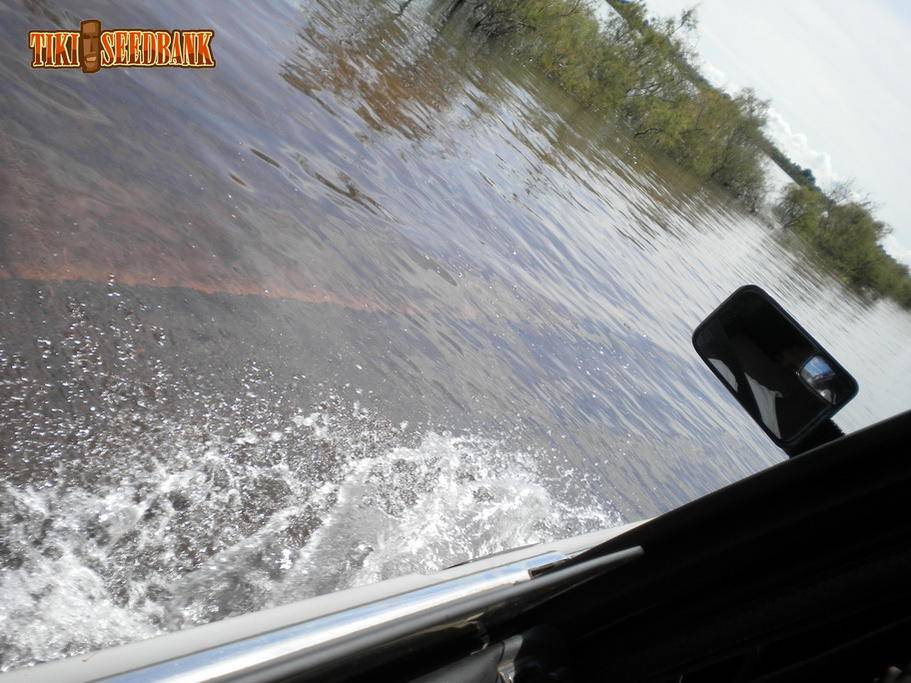
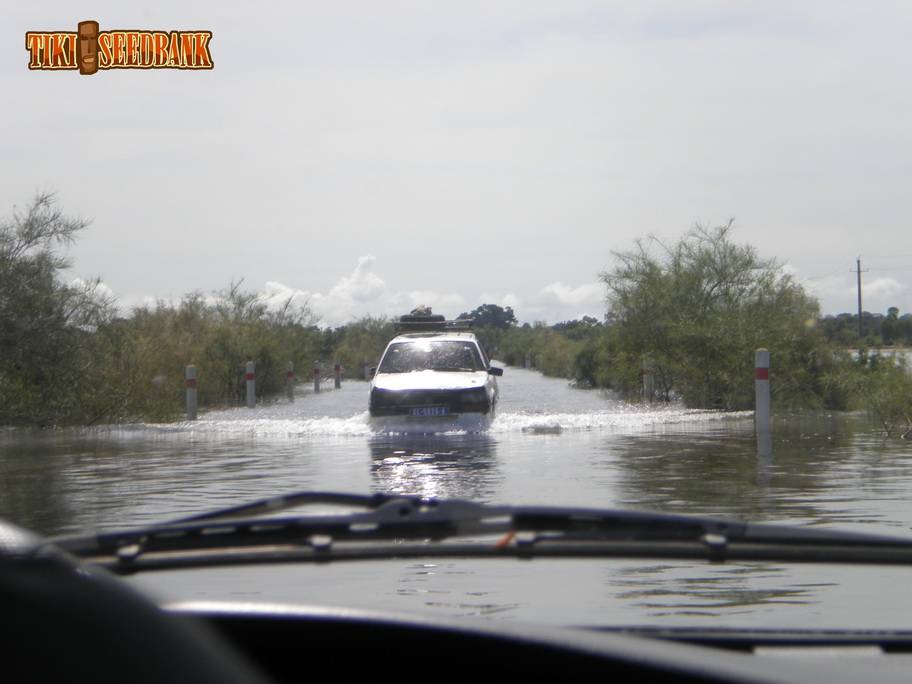
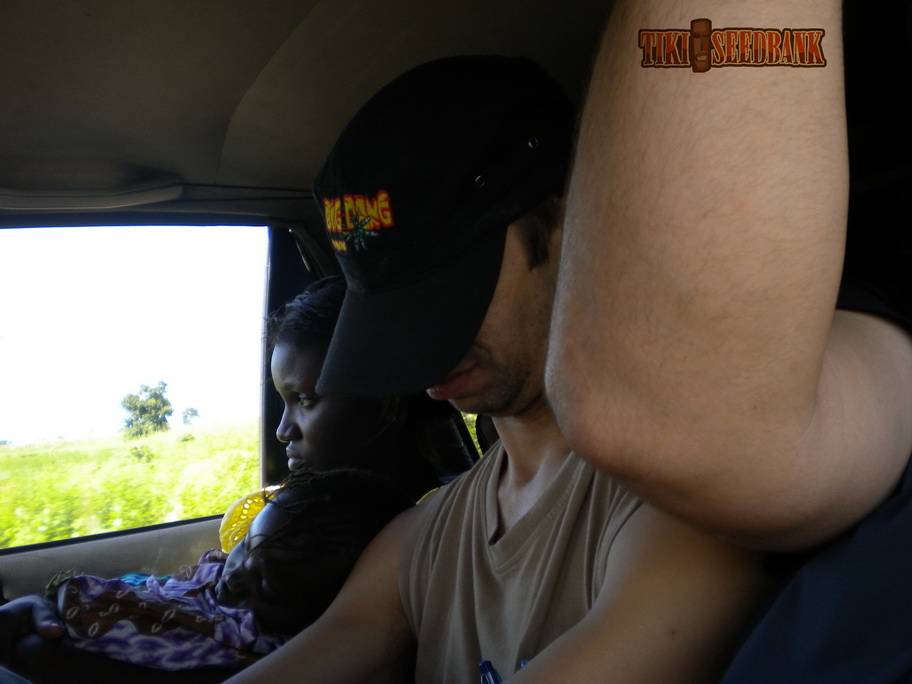
which you need to get across whilst hoping that the engine doesn’t choke. We also continue to slalom between the holes, which decorate the roads.
We get through Gambia without any problem, except for the usual racketeering from the border police: 1000CFA per foreigner, for every stamp at all the borders.
It’s amazing the difference between the sad and frowned faced character of the Gambian border police, compared to the joyful, welcoming, attitude of the Senegalese border police.
After the ferry in Gambia we are back to dancing with the potholes.
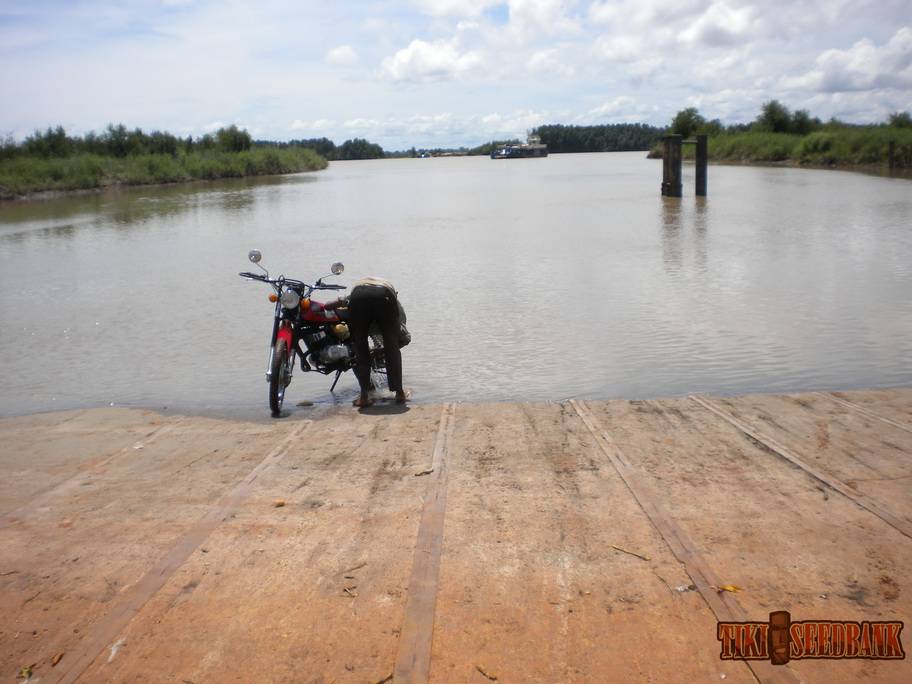
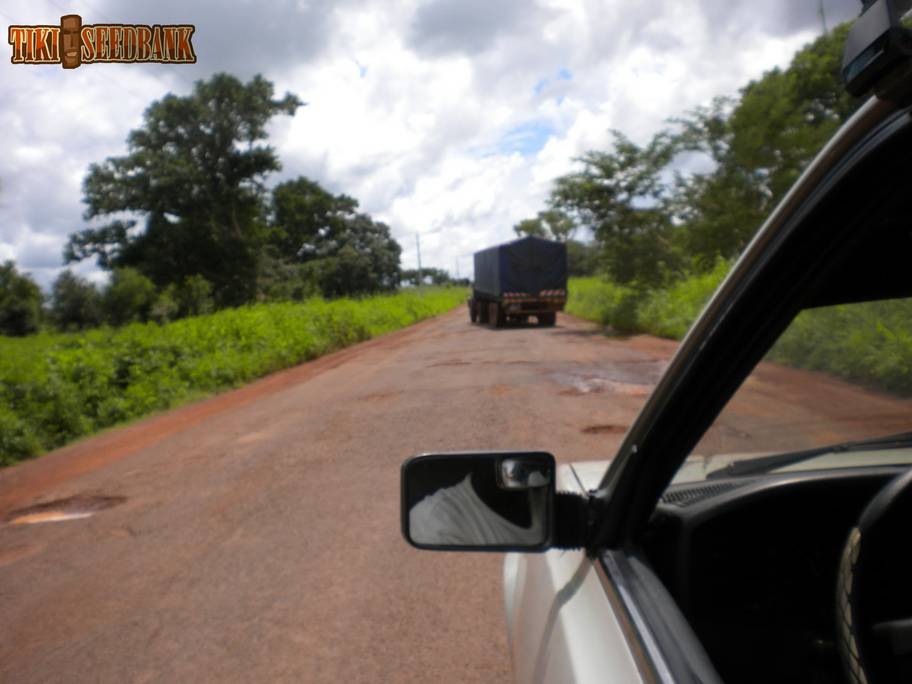
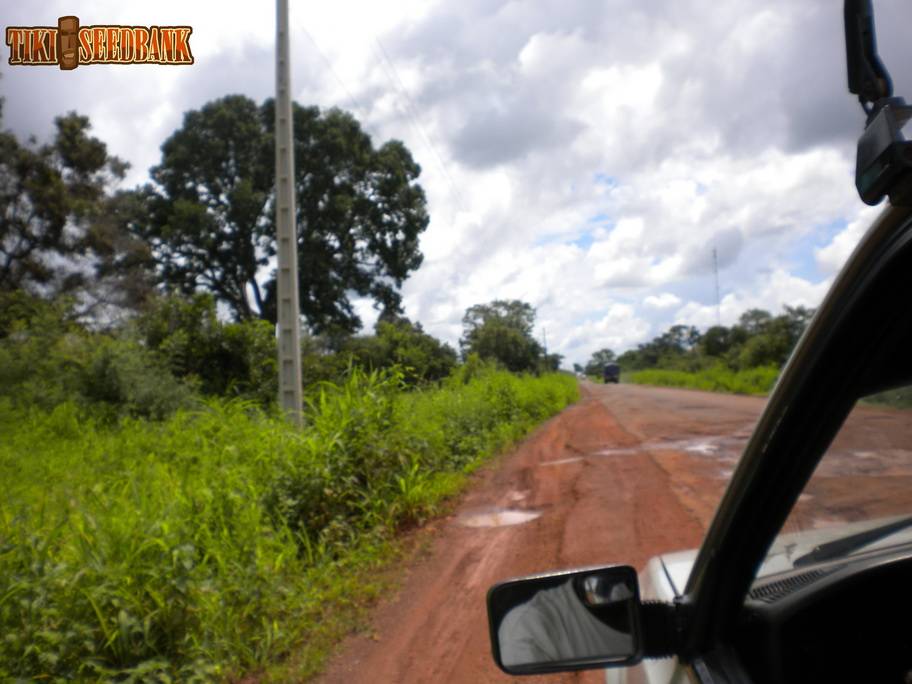
From here on, for obvious reasons, I’ll quit citing the names of towns; also the names of the people we meet will be fictional.
After the Gambian border, the Casamance roads have new supplements: roadblocks and military controls every 5 to 10km approximately.
It is because Casamance is a region known for harbouring rebellions. The army is therefore present at major points.
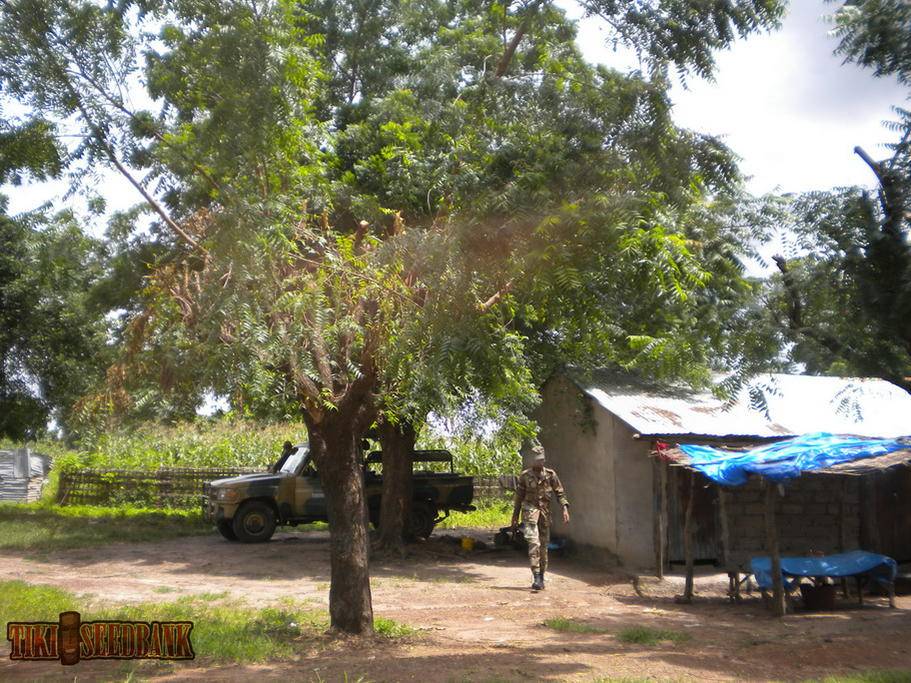
We arrive at Bignona and from there we take a taxi-bus (or a hearse as the Senegalese like to call it). Direction K-Ville
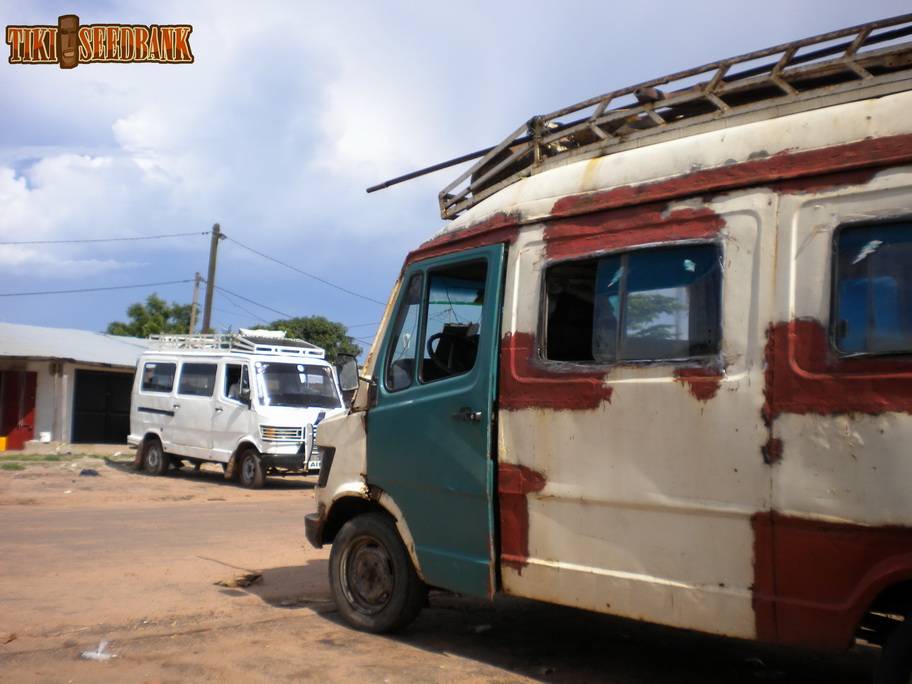
This time there are no roads, just mud, holes and water.
It takes us 3 to 4 hours to reach K-Ville. This includes stopping every two to 300m to put water in the radiator or reattach the brake pedal with a screw.
The engine is fuming…we are fed up and just want it to end.
Luckily at the end of all the troubles a good meal and bed await us which was totally unexpected here at the end of the earth.
We found a hotel with 2 huts at the end of the courtyard.
With Dokta we discuss about the possibility of finding contacts
Dokta speaks Wolof but here they speak Djoola.
The owner of the hotel heard us speak and proposes a plan with a pirogue sailor from the region.
He knows the mangrove swamps of the region inside out. He was born here.
The region is filled with mangrove swamps; it is impossible to travel without a pirogue.
With all the bushes around, it’s not the time to act like adventurers who know everything. Makes me think of tourist puppets: hats, shorts…ranger gear.
Here Nature is not like European forests.
Although there are no wildcats, there are tonnes of insects and reptiles of all types. A problem could quickly happen.
We decide to go with the boatman or the pirogue sailor. Yvan calls him and makes meeting arrangements for the next morning.
We will work out the price with Célestin, the boatman.
In Casamance the majority of the people are Catholics.
The first names do not sound the same as in the north
The next day, Yvan takes us to meet Célestin, a small man with a cheerful grin and an attentive eye. He seems to have a calm persona. He’s a fisherman and village chief, probably about 60yrs old.
He thinks he’s going to give us a tour guide around the region and take us fishing.
Fine by us, all we want is to get him alone so that we can discuss what we are really here for. Worst comes to worst we would have toured the marshes.
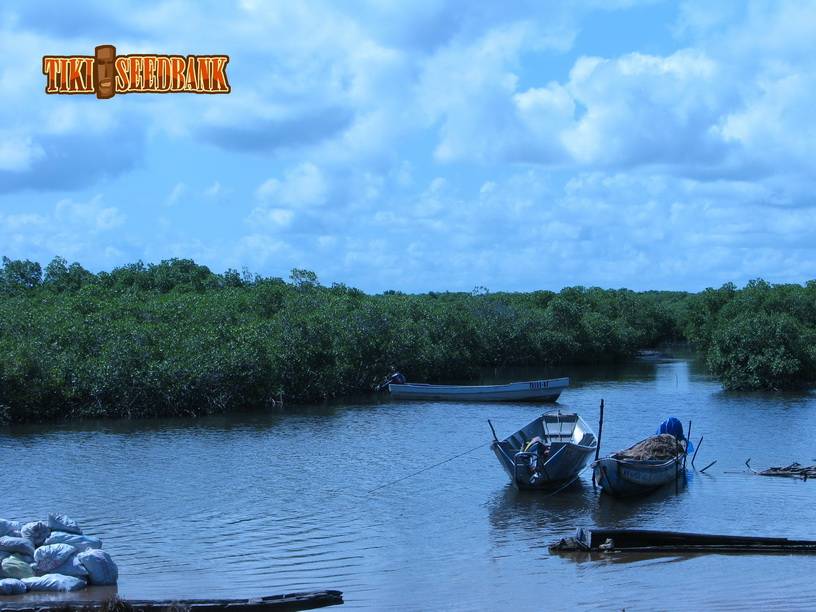
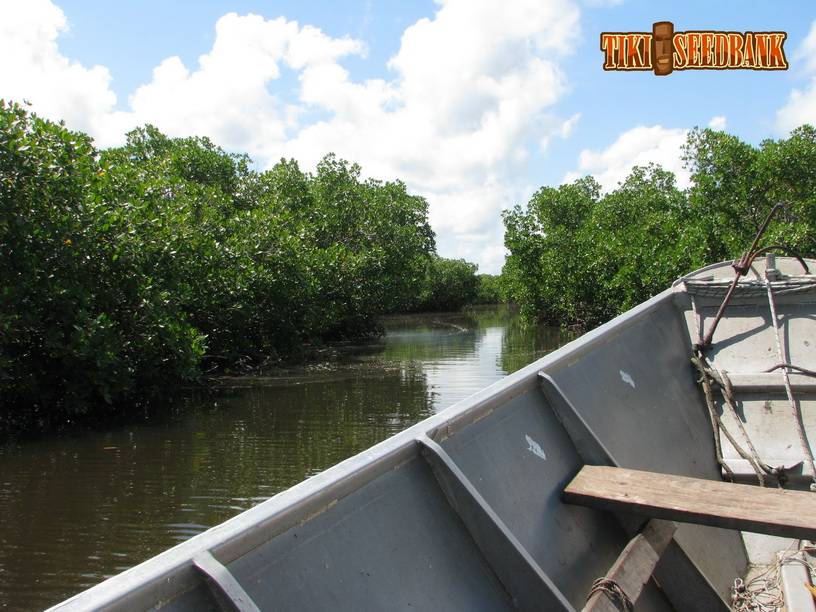
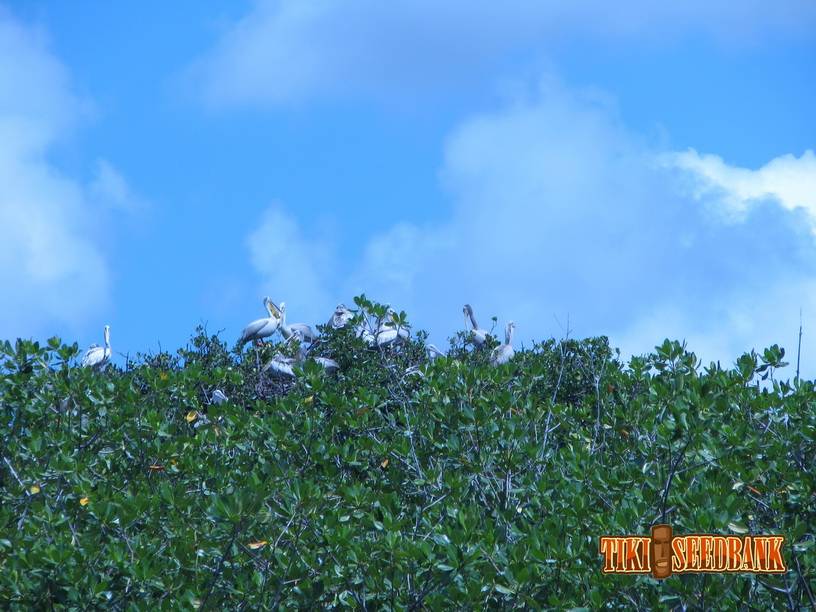
He takes us through a labyrinth of canals made by the mangroves. There is not much depth. The water here is not the result of a high tide.
Once we reach deeper waters, we start discussing our business with Célestin.
A few allusions allow him to quickly realize what we were looking for. He laughs.
We ask him if he knows where we can find weed or cultivations.
He knows of a village, M-village on an island in the middle of the bolongs.
Normally the villagers cultivate big fields and produce large amounts of weed. We should find what we are after. We head off to M-village through the mangroves.
We can now sit back and admire the bolongs and all the different sort of birds all around, including pelicans that cannot be compared to the ones I saw in Mexico.
We also run into a lot of people, some fishing and others who live on their pirogues.
There are a lot of little paths between the mangroves.
There is a lot of life here, despite the difficulties in accessing the area.
The first question that comes to me is, “where is the fresh water?”
In the mangroves there is only seawater.
What sort of variety can grow here?
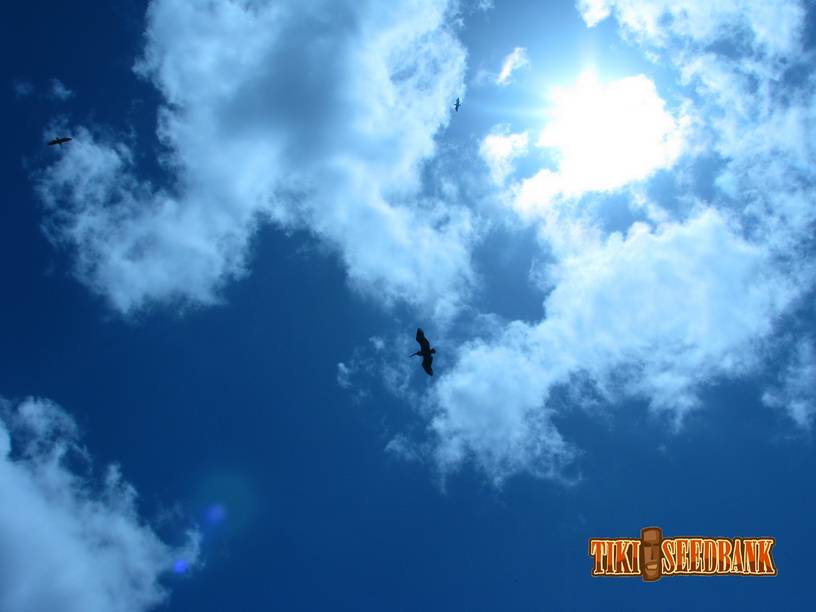
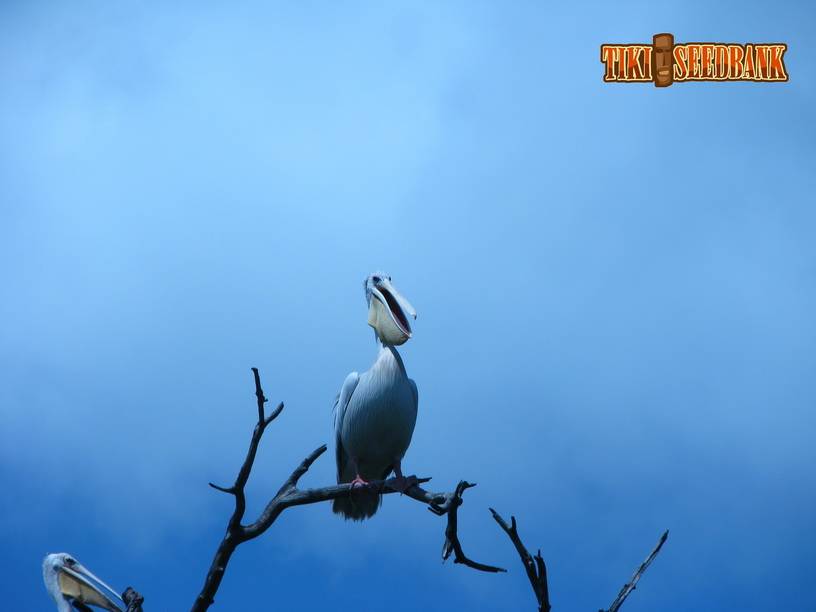
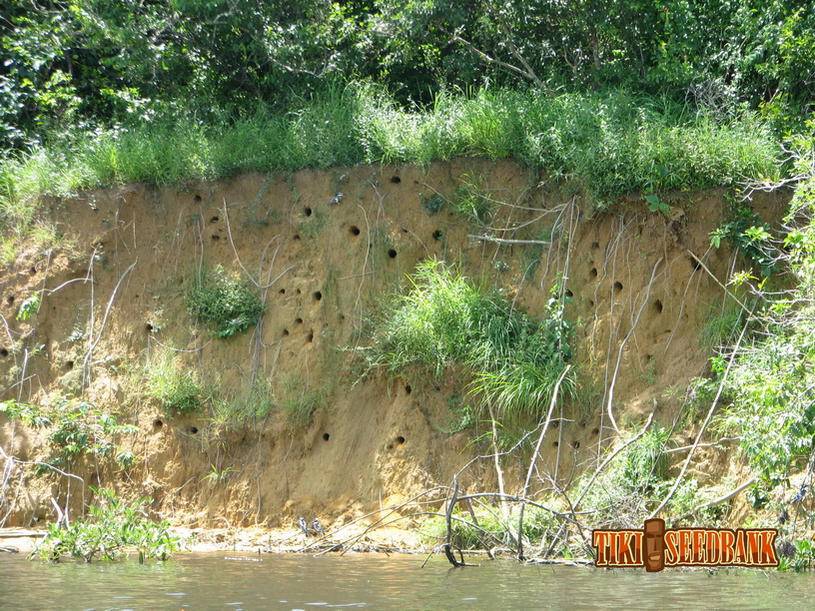
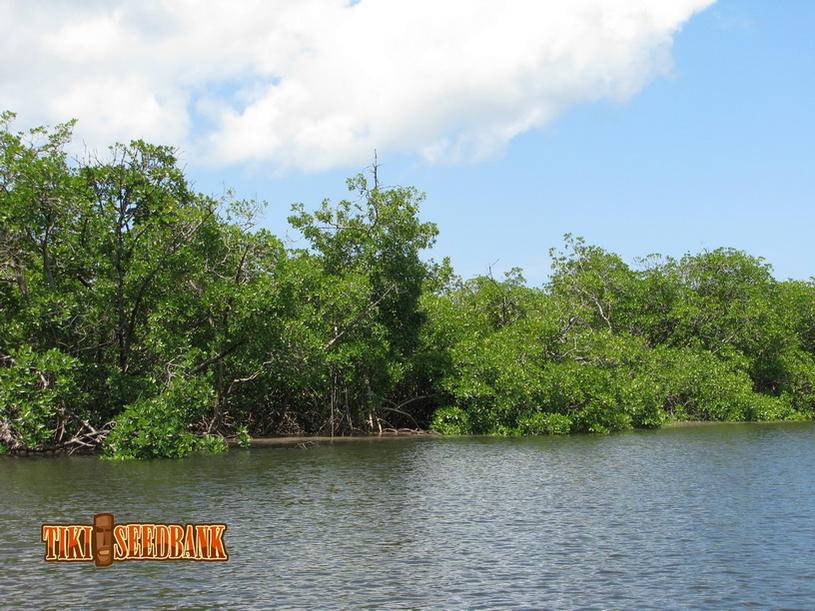
Not easy getting passed the fear barrier of the local cultivators.
Got to admit that their prisons are a lot harsher than ours.
On my first trip, Dokta’Zee, a friend, had prepared me quite well.
He taught me quite a few words in Wolof, which had helped a great deal.
Since I wasn’t satisfied with the first trip, I planned a second one.
This time I asked Dokta’Zee to accompany me.
The idea of revisiting Senegal excited him and he accepted. Immediately, he reacquainted himself with his old friends in Senegal.
We will be heading to Casamance; very unlikely to find anything-decent elsewhere.
The season is in October and we are currently in June.
We set up the trip and the rendezvous is for October.
Dokta’Zee and I depart at 11am from Zurich.
Arrive in Dakar at 11pm. Temperature…. cooking!
What stands out this time is the humidity.
I didn’t feel this last time.
But it is the end of the rainy season, therefore normal.
The air is thick and oppressive.
We pass the border and trek past the airport area to find a taxi that doesn’t try to pull the 5000CFA scam.
We still end up paying 2000CFAs. It’s hard trying to negotiate at the entrance of the highway since the cab drivers know that you don’t have much of a choice
We arrive at the hotel and find no electricity in the building. Actually there is a power outage in the entire country and it has been the case for a few days now.
We find out later that manifestations are being organised everywhere to protest against the power cuts.
The Minister for energy will be put to question for having mysterious deals, which led to purchasing cheap quality fuel.
I remember my first contact with a local here: “This is Africa, my friend!”
A week goes by and power cuts are continuously omnipresent in the entire country.
For a lot of little shops, these cuts mean an end to their business.
Freezers and fridges are often what enable shop owners to survive in an already dire market.
It is hot, hot and mucky, mosquitoes and humidity fully present for our first night in Senegal.
Mosquito nets are a necessity if we want to avoid scratching ourselves all night.
In Senegal the most annoying mosquitoes are the tiny ones.
Their proboscis being too small to pierce the skin, they tend to target areas where the skin is thin, hence the most sensitive parts of the body: the arch of the foot, between the fingers, the palm, the eyelashes, and behind the ears. All the areas that are going to itch like crazy.
Luckily their bites are itchy for only about 20 minutes.
There are tons of mosquitoes in the city.
It’s going to be tough in the bushes of Casamance
The next day we head south. We sort a few things out and inquire on transport costs.
We head to the station “Le Pompier” to grab a taxibrousse (bush taxi), which in most cases is a Peugeot 504 station wagon with 3 added seats at the back.
There are 8 of us with the driver...destination Kaolack.
We are in the rainy season so most likely the roads will be in a state.
It ends up taking us 4 hours to travel 150km (the distance from Dakar to Kaolack).
Considering the driver has to slalom between potholes large enough to destroy a car, we did a good time. The drivers here are aces on the wheel.
We stop at Kaolack and spend the night at a hotel. Next day it’s all the way to Casamance.
Again we use a taxibrousse but this time there are not 8, but 11 passengers.
A woman and her 4 kids now occupy the three back seats.
There is also another woman sitting beside us with her 3 year old.
None of the kids complain during the entire journey of 8hrs to Bignona.
8 hours for less than 300km.
300km of damaged roads sometimes flooded and sometimes even inexistent roads,
which you need to get across whilst hoping that the engine doesn’t choke. We also continue to slalom between the holes, which decorate the roads.
We get through Gambia without any problem, except for the usual racketeering from the border police: 1000CFA per foreigner, for every stamp at all the borders.
It’s amazing the difference between the sad and frowned faced character of the Gambian border police, compared to the joyful, welcoming, attitude of the Senegalese border police.
After the ferry in Gambia we are back to dancing with the potholes.
From here on, for obvious reasons, I’ll quit citing the names of towns; also the names of the people we meet will be fictional.
After the Gambian border, the Casamance roads have new supplements: roadblocks and military controls every 5 to 10km approximately.
It is because Casamance is a region known for harbouring rebellions. The army is therefore present at major points.
We arrive at Bignona and from there we take a taxi-bus (or a hearse as the Senegalese like to call it). Direction K-Ville
This time there are no roads, just mud, holes and water.
It takes us 3 to 4 hours to reach K-Ville. This includes stopping every two to 300m to put water in the radiator or reattach the brake pedal with a screw.
The engine is fuming…we are fed up and just want it to end.
Luckily at the end of all the troubles a good meal and bed await us which was totally unexpected here at the end of the earth.
We found a hotel with 2 huts at the end of the courtyard.
With Dokta we discuss about the possibility of finding contacts
Dokta speaks Wolof but here they speak Djoola.
The owner of the hotel heard us speak and proposes a plan with a pirogue sailor from the region.
He knows the mangrove swamps of the region inside out. He was born here.
The region is filled with mangrove swamps; it is impossible to travel without a pirogue.
With all the bushes around, it’s not the time to act like adventurers who know everything. Makes me think of tourist puppets: hats, shorts…ranger gear.
Here Nature is not like European forests.
Although there are no wildcats, there are tonnes of insects and reptiles of all types. A problem could quickly happen.
We decide to go with the boatman or the pirogue sailor. Yvan calls him and makes meeting arrangements for the next morning.
We will work out the price with Célestin, the boatman.
In Casamance the majority of the people are Catholics.
The first names do not sound the same as in the north
The next day, Yvan takes us to meet Célestin, a small man with a cheerful grin and an attentive eye. He seems to have a calm persona. He’s a fisherman and village chief, probably about 60yrs old.
He thinks he’s going to give us a tour guide around the region and take us fishing.
Fine by us, all we want is to get him alone so that we can discuss what we are really here for. Worst comes to worst we would have toured the marshes.
He takes us through a labyrinth of canals made by the mangroves. There is not much depth. The water here is not the result of a high tide.
Once we reach deeper waters, we start discussing our business with Célestin.
A few allusions allow him to quickly realize what we were looking for. He laughs.
We ask him if he knows where we can find weed or cultivations.
He knows of a village, M-village on an island in the middle of the bolongs.
Normally the villagers cultivate big fields and produce large amounts of weed. We should find what we are after. We head off to M-village through the mangroves.
We can now sit back and admire the bolongs and all the different sort of birds all around, including pelicans that cannot be compared to the ones I saw in Mexico.
We also run into a lot of people, some fishing and others who live on their pirogues.
There are a lot of little paths between the mangroves.
There is a lot of life here, despite the difficulties in accessing the area.
The first question that comes to me is, “where is the fresh water?”
In the mangroves there is only seawater.
What sort of variety can grow here?



 Wow what a trip !!! Great report, and great findings.
Wow what a trip !!! Great report, and great findings.


